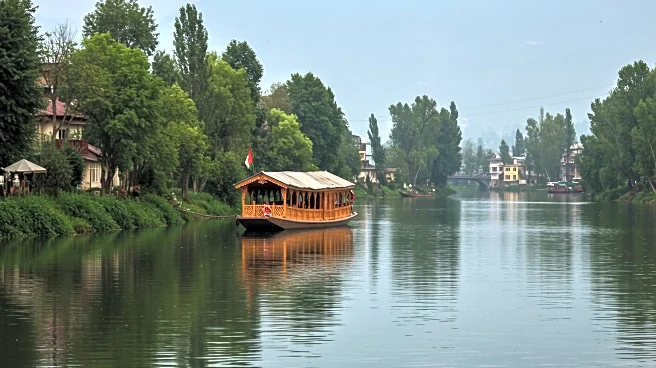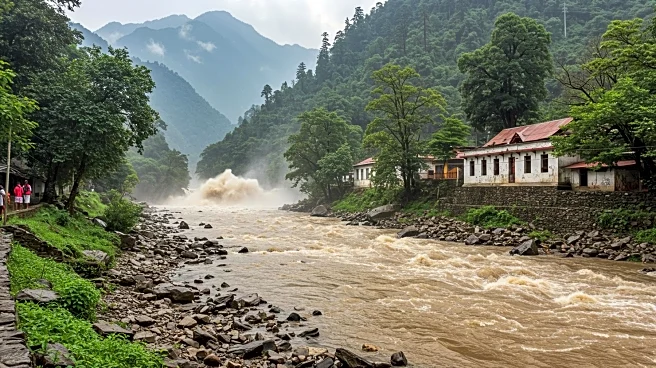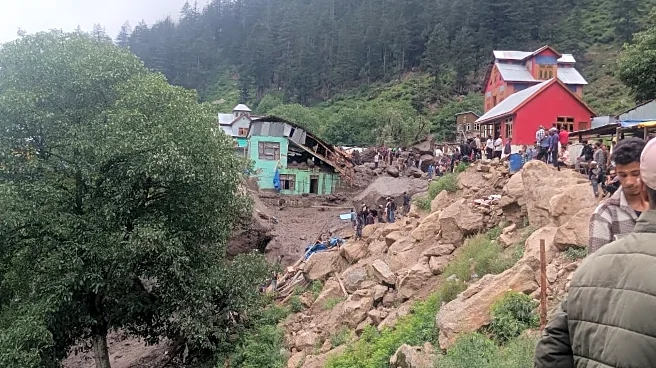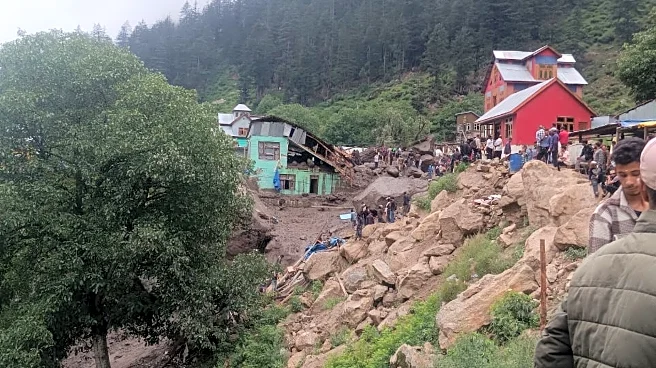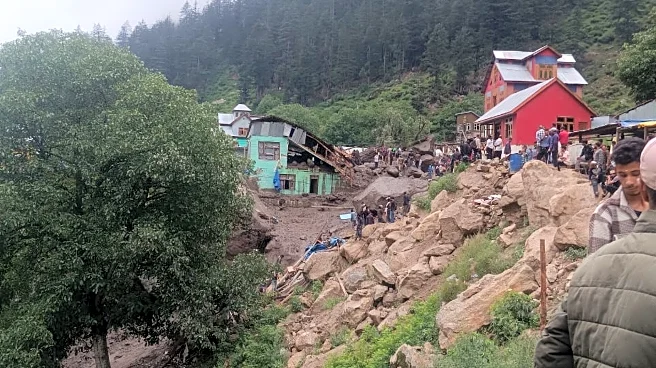What's Happening?
The village of Chositi in Indian-administered Kashmir has been struck by flash floods, resulting in the deaths of at least 60 people and leaving dozens missing. The floods occurred during a busy pilgrimage route to a Himalayan shrine, causing chaos and destruction. Rescue operations are ongoing as officials work to find survivors and provide aid to those affected. The flooding was likely triggered by a cloudburst, although confirmation from meteorological authorities is pending.
Why It's Important?
The flash floods in Kashmir have significant implications for the region's safety and infrastructure. The disaster has disrupted religious activities and poses challenges for emergency response teams. The event highlights the increasing frequency of extreme weather events, potentially linked to climate change, and underscores the need for improved disaster preparedness. The impact on the pilgrimage route may have economic consequences for local communities reliant on tourism.
What's Next?
Rescue efforts will continue as authorities strive to locate missing individuals and provide support to affected families. The suspension of the pilgrimage may lead to economic challenges for businesses dependent on tourist activity. There may be increased pressure on government agencies to enhance infrastructure resilience and address climate-related risks. Further rainfall could exacerbate the situation, requiring ongoing monitoring and response.
Beyond the Headlines
The disaster in Kashmir may lead to discussions on the ethical considerations of development in ecologically sensitive areas. The event could prompt long-term changes in policy regarding land use and disaster management. Cultural and religious practices may be reevaluated in light of the risks associated with pilgrimage routes in flood-prone regions.
